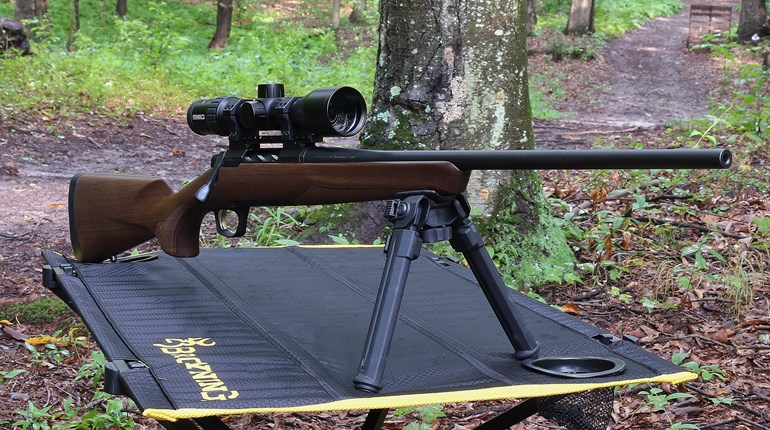
We have already addressed the restrictive ordinances introduced by the Los Angeles City Council—one already signed into law, the other likely to be soon—banning the possession of so-called “high-capacity” magazines holding more than 10 rounds and mandating that handguns be disabled or locked up in the home. While our coverage addressed how effective these measures will be in giving criminals the advantage over law-abiding citizens, there is more to say about how useless they will be for their stated purpose of minimizing gun-related violence.
These gun-control ordinances fall under a legislative model that seems to be increasingly popular at both the state and municipal levels these days. This sort of measure is intended to display firm resolve on the part of its creators but is hastily written, with little chance of passing judicial review in the long run. Council members are banking on the fact that their constituents will give them an “A for effort” even after the offending ordinances are no longer on the books.This sort of measure is intended to display firm resolve on the part of its creators but is hastily written, with little chance of passing judicial review in the long run.
First, a look at the practical effects of both ordinances is in order. Proponents of “high-capacity” magazine bans have never been able to marshal empirical evidence that they do anything to lower crime rates. But then, who needs statistics when you have unfounded emotional claims? The prevalent narrative behind attempts to limit magazine capacity always takes the form of, “If only x mass shooter had had to reload more often, how many more survivors would there have been?” There’s no way anyone could ever know—but homicidal maniacs are not generally known for their strict compliance with gun laws.
So-called “safe storage” laws that require firearms to be locked up do feature a body of statistical evidence pertaining to their impact, and it doesn’t prop up the side of the anti-gunners. John Lott co-authored a study back in 2001 demonstrating that such laws actually increase both violent and property crime rates, and a 2012 meta-analysis of various gun-control policies also concluded that their impact was either zero or negative. “Safe storage” laws fail to deter irresponsible behavior that occasionally leads to accidents, but they significantly decrease the ability of gun owners to defend themselves in the case of a home invasion.
Both of these gun-control ordinances are vulnerable to being overturned in the course of judicial review, given that they oppose the spirit of the Second Amendment and may be pre-empted by state law—which, for instance, forbids the sale of “high-capacity” mags but dares not mandate their confiscation, as L.A. is doing. But the storage ordinance is especially restrictive in its impact, in a way that is most strongly felt by the unprivileged segments of society. “Single women who live alone in high-crime areas, and who may require prompt access to a firearm for self-defense, do not have the same storage needs as families in gated communities,” according to attorney Chuck Michel. The inherent unfairness of the ordinance will not bode well for its ability to face legal challenges.
The passage of the ordinance banning “high-capacity” mags was a slam-dunk for its architect, Councilman Paul Krekorian—except for one last-minute snag. While the council voted unanimously to approve the measure, it was split on whether to make an exception for retired law enforcement officers. This question has been deferred, with city attorneys tasked to draft the language detailing the exception. Krekorian’s faction lost 10-4 in their attempt to shove the ordinance through with no amendment.This face-saving effort on the part of Krekorian and his fellow council members has the potential to torpedo the storage ordinance when it comes to a lawsuit.
Stinging from this forced compromise, Krekorian was explicit about the “safe storage” ordinance applying universally: “No exceptions for law enforcement officers. No exceptions for anyone.” But this unyielding stance was never going to yield success. In the face of police union opposition, the council opted to tweak the language of the ordinance, stating that firearms may be unlocked when they are close enough to be considered as under the owner’s control. This seems to have been intended as a way to placate retired officers without actually providing them an exception, but the wording is so vague that no one seems to know where “control” begins and ends. If you sleep with a firearm on your nightstand, is it under your control? “City lawyers were not immediately able to clarify.”
This face-saving effort on the part of Krekorian and his fellow council members has the potential to torpedo the storage ordinance when it comes to a lawsuit. The police union is unlikely to back off, and the stakes are much higher this time around, as it is hardly unprecedented for retired officers to be targeted for investigations that they conducted in the past. The “safe storage” ordinance has the equivalent of a giant bull’s-eye painted on it. Krekorian and company may have outsmarted themselves this time around.
The measures that Los Angeles has taken to oppress law-abiding gun owners will bear no happy fruit; the best we can hope for is that they will not survive their day in court. But we do have reason to hope for the best.

|
Use Your Power!
Tell Mayor Eric Garcetti not to sign the “safe storage” ordinance into law. By doing so, he would be exposing the people of his city—including those who have served the community as law-enforcement officers—to undue risk from the threat of home invasion. Contact his office by mail, phone or email with the information listed
here.
|


































